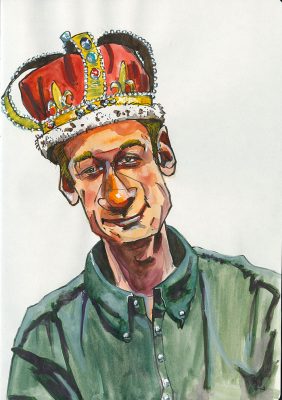 Sometimes I watch TV just so I can sketch Ryan Stiles—because he makes me laugh and laugh, and laugh. (At the time of this post American episodes of “Whose Line Is It Anyway?” can be seen on HBOMax.)
Sometimes I watch TV just so I can sketch Ryan Stiles—because he makes me laugh and laugh, and laugh. (At the time of this post American episodes of “Whose Line Is It Anyway?” can be seen on HBOMax.)
And because, while he doesn’t have a beard, and his hair style has stayed basically the same for 4o years, he has one of the most plastic faces on the planet.
And that’s fun to sketch.
(Brush pen and watercolor on Canson 180 Sketchbook.)



















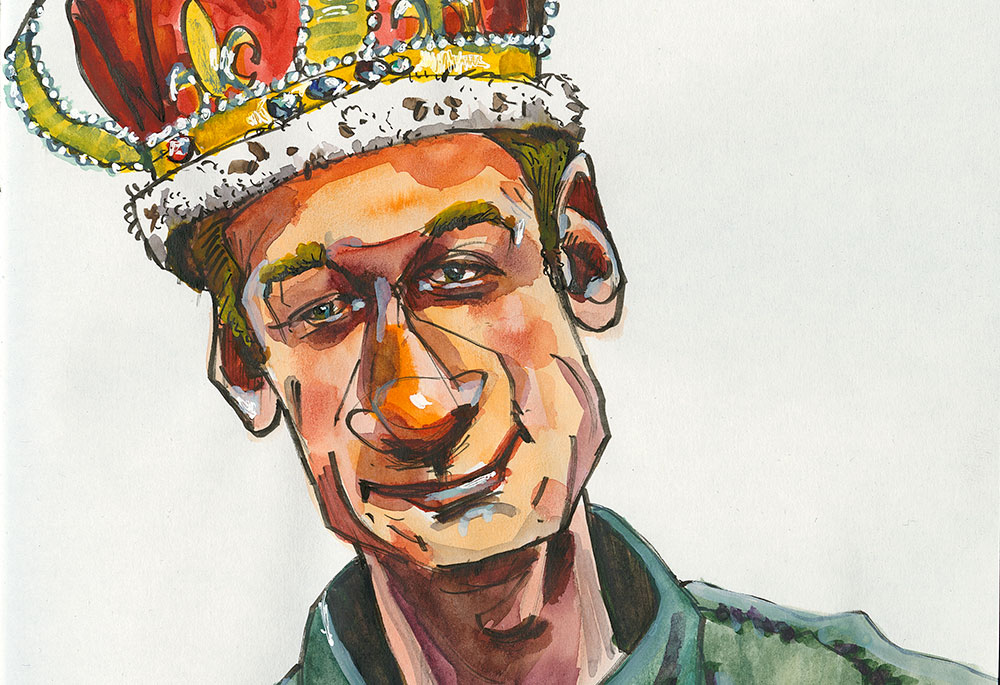
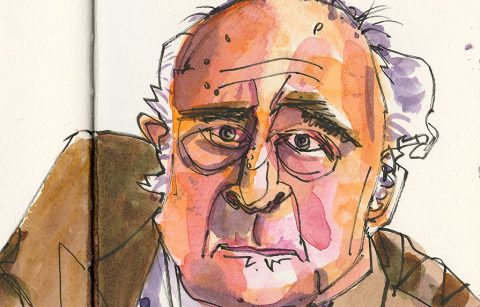
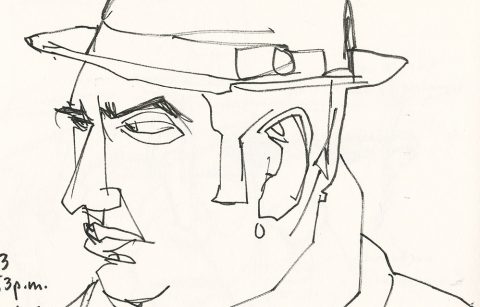
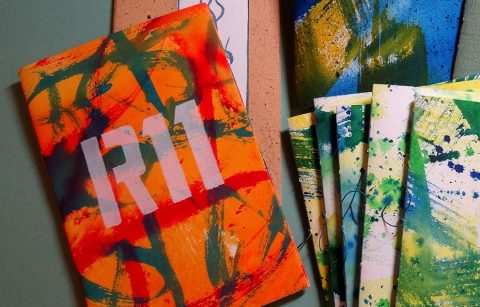
Roz, I’m wondering whether you “stop” the video while doing these sketches. You may have answered this elsewhere, but I’m just wondering. I used to do this a lot, but now find that the characters don’t stay on the screen long enough for me to sketch them at all unless I stop the video.
Sandee, I’ve actually written quite a lot about my procedure—sometimes stopping the TV image, sometimes not stopping the TV.
They provide different challenges and the latter gives you a chance to work on your memory skills. Unfortunately those posts seem to have been written before the archive cut off which was December 2020. Some of them may come back but I can’t count on that as more and m ore things keep coming up that need my attention.
I would encourage you to try both. Not stopping the tape is more like being out and about. Nature shows are good for this as they tend to follow the subject longer. And it’s more like sketching from life. Finding online bird cams will also help you learn to sketch faster from life.
But if you don’t have the visual memory yet, or don’t want just a random person in your journal because you can’t hold all the details in your mind then stop the TV and sketch a view that you select.
If you do the latter still push yourself to work quickly because then you’ll be building fast sketching skills for out and about and you won’t get into bad habits of indecision.
Sorry I can’t point you to any links where I’ve gone on and on about this at length, but you get the idea. This Ryan Stiles sketch on the blog today is a 25 minute sketch I did while I stopped the show. I knew I wanted to be fussy with the detail in the crown, and wanted to get a likeness, and do a little painting. But even so the sketch is less than 10 minutes and most of the time was spent on the water odor, and letting first layers of watercolor dry of course.
So your intention for the final piece will be a factor in your decision to let the show run or stop it.
The previous blog post’s image (Feb. 10, 2023) is an example of letting the show run and getting what I could. The image is very small so not a lot of area to cover, I worked from the outside in, head shape to features, hitting the hair immediately as that was what was important to me, and then just got the rest of the outline down and by the time this guy moved off the screen, coming back for another few seconds of view and then gone, I had enough on my page to finish the details “from memory.” And by that I mean, I knew where I wanted the light. I didn’t get a likeness of this guy and wasn’t concerned. I just wanted that funky hair, and got it.
Hope that helps.
Thank you for the really extended response. I’ll work on improving my visual memory which will help me in other instances also. Perhaps it has deteriorated from earlier days when I seemed to be able to do better with unstopped video. I agree that when unstopped, your sketch resembles normal life sketching, except that on video, the view seems to move from character to character more than my attention would move from character to character in normal life.
Sandee the trick to keeping the video running and useful for sketching lies in picking shows which will hold on “characters” longer and not constantly cut away. I have found that nature shows are typically a good bet as they follow animals around. Additionally talk shows are good if you want to keep referring to faces because if you have a host and a guest the cameraman may cut between the two often, but if you keep looking up (and I tend not to look at my page much), you keep seeing the same face again and again. Yes the person will be talking and not sitting still for you, but you can start to work on feature placement and work on those skills.
Think of it like sketching chickens at the State Fair. Start a page with a few lines for the first face, when the camera goes to the host start a new portrait for the host, when it goes back to the guest work on that portrait again, and keep doing that for as long as the guest (or host) is on. I actually have a post on this with examples, but it’s in the archive so I can only explain it.
It’s a lot of fun to work that way, and it’s really good practice for sketching people at weddings, family dinners, get togethers and such, where everyone is interacting all the time, not sitting quietly (like people waiting for trains and planes and such would be doing).
Have fun. In no time you’ll have a list of go-to shows that have camera action that suits your intentions. Some of the talk shows even show the full person/guest seated and so while it isn’t an “action” sketch you can at least work on the gesture of their body as they talk.
P.S. One show just popped into my head, one of my favorites for sketching and letting the video run—”Perry Mason” the original one with Raymond Burr. It’s black and white film so great for values and the cameras were really heavy back then so they tend to do a little zooming in and out, but there isn’t a lot of blocking and moving about in a scene. So if you’re patient the camera will keep coming back to your character.